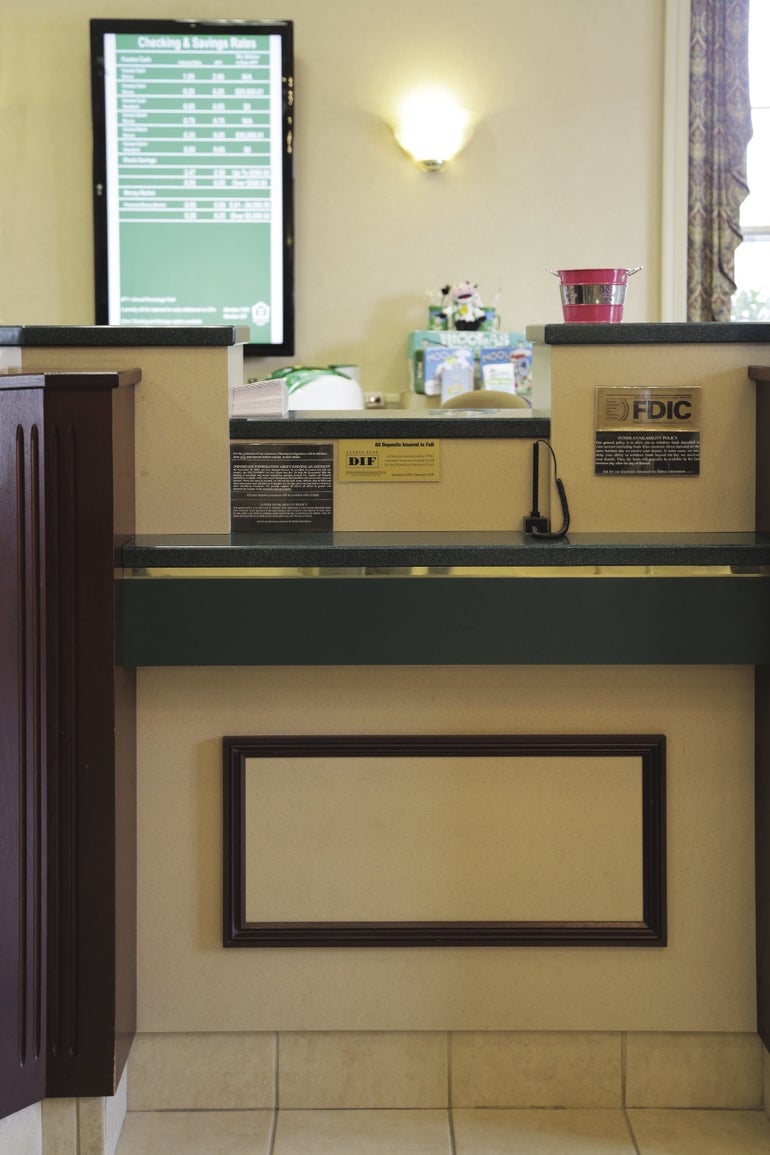In a world of online bill payments, smartphone check deposits and nearly universal debit card use, you might think the bank teller would be going the way of the telegraph operator. But Dana Neshe, executive vice president at Natick-based Middlesex Savings Bank, said that’s just not the case. There may be a bit of a decline in the number of tellers at any given bank branch, she said, but the main thing that’s different is what they’re doing.
“I would say that bank tellers aren’t disappearing, but the nature of the work they do is changing, primarily because of the technology,” she said.
At Middlesex’s branches, Neshe said, there are still plenty of people who like to do their banking in person, and not all of them are senior citizens who haven’t caught up with new technology. She said most people walking in the doors are between the ages of 35 and 55. And, because tellers are no longer doing as much routine work, customers are able to get more from a visit to their local branch. Activities like counseling and research that once required sitting down with a consumer service representative are increasingly being handled at the teller window, or even in the teller line. Neshe said the bank has some specially trained tellers who “float” in the lobby, answering questions.
Middlesex and many other Central Massachusetts banks and credit unions are moving away from having two distinct positions, teller and service representative, toward a model some call the “universal banker.” Leominster Credit Union is starting to train workers for that new paradigm this year and plans to roll it out, one branch at a time over the next several years.
“One thing we do hope for is that tellers will have more time to spend with each member,” credit union spokeswoman Janet Belsky said. “They’ll be trained exactly the same as a members’ services representative would be, so they would actually be one and the same.”
Bruce Spitzer, director of communications for the Massachusetts Bankers Association, said people have been predicting the end of teller jobs for decades.
“It’s been rumored since the introduction of ATMs in the 1970s that this is imminent,” he said. “The reality is that customers, when they’re searching for a new bank, still make that decision based on a branch—a brick-and-mortar branch—that’s close to home,” he said. “Obviously a brick-and-mortar branch requires tellers.”
Spitzer said some branches may shift tellers’ hours, bringing them in during lunch times or late afternoons when more customers walk in, but they’ll still need to be there.
Embedded in business model
John LaHair, public relations manager at Marlborough-based Digital Credit Union, said brick-and-mortar operations are key to the credit union model, and they can go hand-in-hand with technological development. DCU opened a new branch in Fitchburg last fall and another in Lexington in April, and it relocated its Burlington branch to a bigger location in June. He said having a physical presence helps create strong relationships with local communities.
“You get that face-to-face contact, that personal attention,” he said. Starting with a child’s first checking account or a young adult’s first car loan, he said, “people have questions, and that face-to-face is truly something that I think every financial institution can hang their hat on.”
DCU’s branches include “Internet cafes” fitted with iPads, in-person demonstrations of the bank’s mobile apps and online bill pay technology, and, in some cases, consoles that allow for live chats with operators at the credit union’s main offices.
Mike Allard, senior vice president of retail banking at Hudson-based Avidia Bank, said there’s probably been a slight decline in the total number of tellers in recent years as fewer customers have been coming into the branches, but the bank has found it’s able to use the slower pace of in-person activity to its advantage. Instead of having each customer in the teller line move through the business they came for and then get out of the way, bank staff are now trying to have real conversations.
“Over the last three or four years, we’ve moved into that being more of the culture,” he said, “leveraging that opportunity to learn more about the customer, inquire about their needs, what we can fulfill.”
Out from behind the counter
Allard said Avidia’s current model is a sort of halfway step to making all tellers universal bankers. Over the next three to five years, he said, the bank will retrofit branches with kiosks in the middle of lobbies. Instead of sitting behind teller windows, staff will be out in the open, ready to handle anything from cashing a check to explaining mortgage rates.
“Right now, we’re educating, training, preparing our retail employees for that,” he said.
At Middlesex Savings, Neshe said the changes to tellers’ roles will be ongoing, but their jobs will probably never disappear.
“People like to deal with people, especially when it comes to their money,” she said. “I think the nature of the work is going to continue to evolve, but, at least at Middlesex, I don’t think we will ever see a day when our branches are void of any individual employees and replaced by screens.”

